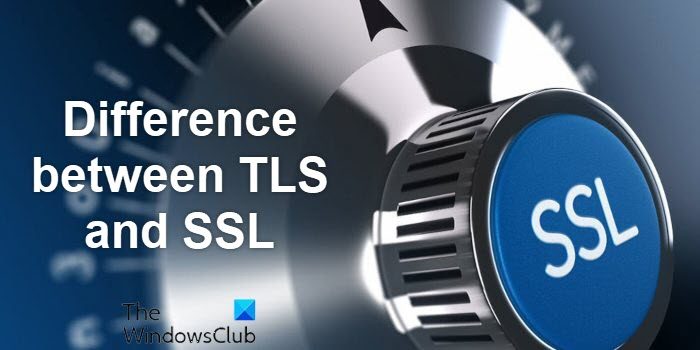Difference between TLS and SSL explained
SSL and TLS are similar technologies because they share a codebase, though one is better than the other. In fact, one is dead and the other still reigns supreme to the time this day. By end of this article, you should learn quite a lot about both security certificates.
What is SSL or Secure Socket Layer?
SSL stands for Secure Socket Layer, and to get straight to the point, it’s the standard technology used for keeping your internet connection secure. It can safeguard all sensitive data that is being delivered between two systems, and because of this, it prevents criminals from reading or modifying the transferring information. As for the two systems, they can be a client and a server, for example, The Windows Club (website) and your favorite web browser. The two systems can also be two servers communicating with each other.
How does SSL work?
SSL provides protection by ensuring that any information transferred between users and websites, or between two computer systems, remains difficult to read. It takes advantage of encryption algorithms that scramble data in transit in a bid to prevent hackers from gaining access while it’s being sent over the connection. Compared to TLS, SSL is more complex to implement, and it uses MAC, or message authentication code after message encryption to ensure data integrity. When it comes down to creating a master secret, then, SSL uses message digest to get the job done.
What is TLS or Transport Layer Security?
TLS stands for Transport Layer Security, and it’s very similar to SSL but more secure. Since SSL is widely popular and known, many have decided to refer to TSL as SSL. As you browse the web, look at the address bar for a padlock icon. If you see it, then know this, it’s because TLS is active, not SSL as some might believe.
How does TLS work?
It works very similar to that of SSL, just better when it comes down to security, still, it is unique in some ways. You see, TLS uses what is known as a hash-based message authentication method in its record protocol whereas SSL does not. Not only that, but TLS is a simpler protocol when compared to SSL. Furthermore, it utilizes a quasi-random function to create a master secret. Note that TLS is not in the business of securing data on end systems. The standard is there to secure the delivery of any data over the internet, which can avoid eavesdropping among other things.
The history behind SSL and TLS
Here’s the thing, SSL was created and introduced back in 1994 by the Netscape Communication Corporation. The standard underwent several upgrades, but due to security concerns, version 1.0 was never released, and as such, SSL version 2.0 was the first public release in 1995. Now, in the year 1996, version 3.0 of SSL was released due to security vulnerabilities. Newer versions were never released in the years to come, and due to the 2014 POODLE attack; version 3.0 was officially put to bed in 2015. When it comes down to TLS, it made an entrance in 1999 as an upgrade to SSL version 3.0. The plan was to employ TLS over TCP in order to encrypt applications using protocols such as FTP, IMAP, SMTP, and HTTP. For example, HTTPS is a secured version of HTTP because it makes use of TLS to protect data delivery.
The differences between Secure Socket Layer & Transport Layer Security
As we have laid out above, the differences are not plenty. The most important is how they establish connections. SSL makes specific connections by using a port, while TLS uses an implicit way of creating a connection via a protocol. This makes TLS more secure than SSL, especially since all versions of SSL are compromised and no longer in use anywhere on the web. Overall, despite their minor differences, their primary goal is to use a cipher suite to decide the overall security of the internet connection. Read: Difference between HTTP and HTTPS
Why was SSL replaced with TLS?
The replacement had everything to do with the vulnerabilities faced by SSL version 3.0 back in 2014. At the moment, all of the major web browsers have gotten rid of SSL in favor of TLS, and we expect this to be the case across the entirety of the world wide web in the years to come.
Does Gmail use TLS or SSL?
Gmail uses TLS by default when sending emails, but nothing is certain. You see, in order to achieve a secure TLS connection, both the sender and the receiver must be using TLS, and this is not always the case.

